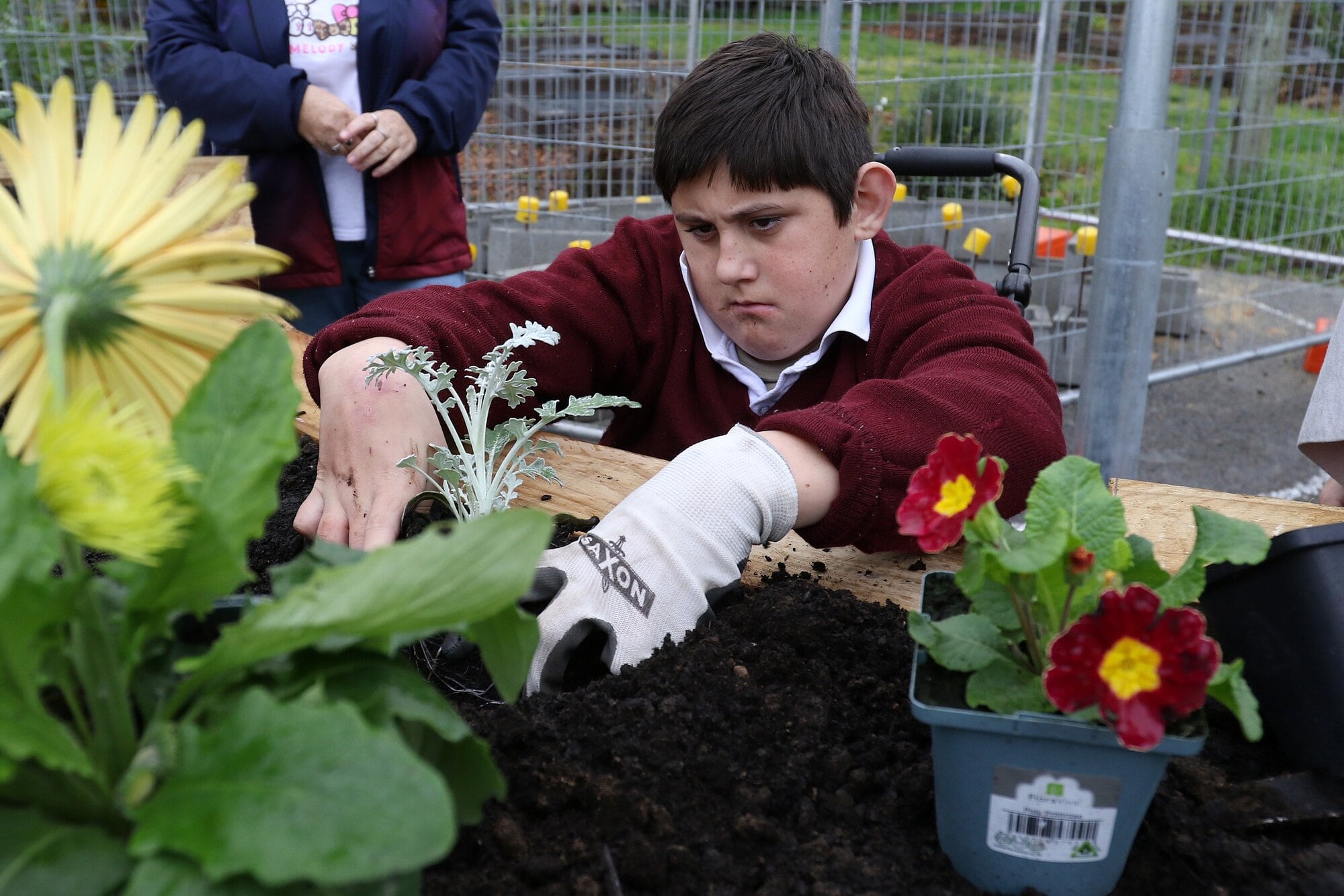Students in Te Puke High School’s special learning unit now have their own purpose-made garden within the school.
As part of the wider Seed to Plate project, the first of three raised beds is now complete.
The beds allow students from the unit, called Te Ringa Awhina, to take part in the activities in the area.
Based on the school’s ag-horticulture, technology and food technology areas, the Seed to Plate project integrates the teaching of all three.
Year 11 student Silvio Shallcrass, 15, had the honour of planting the first plants in the completed raised bed last week.

Year 11 student Silvio Shallcrass plants the first plant in the raised garden. Photo / Stuart Whitaker
Te Ringa Awhina students previously had a plot available to them in the school’s ag-horticulture area, but it was unsuitable for their needs and wheelchair access was difficult.
Many of the students have high learning needs and gardening beds had to be designed so assistance can be provided by support staff.
They also incorporate a recess for wheelchairs, allowing students in wheelchairs easy access to the planting area.
Technology teacher Matt Park said the creation of a garden for the students reinforced the inclusive values of the Seed to Plate project “by having it placed right in the centre”.
“That’s really important for kids. They are part of society and an important part of the school.”
The first bed will feature colour with flowering plants. Once completed, the second bed will have edible plants and the third will feature a sensory garden with plants known for their texture and scent.
The raised beds project has been made possible thanks to a grant from the Western Bay of Plenty District Council’s matching fund.
Ag-horticulture teacher Saskia Ualesi said it’s exciting to have the Te Ringa Awhina students as an integral part of the wider project.
“It’s so exciting for the Te Ringa Awhina kids to have something that’s theirs and they can actually access.”
She said Shallcrass had never done anything in the previous plot but has now been able to plant plants in the raised garden.
There are three students at the school who use wheelchairs.
Te Ringa Awhina leader of learning Moniqe Eades said students in wheelchairs were unable to access the plot previously assigned to the unit as it was at ground level.
“Matt came up with the design with students having raised beds and it’s going to be life-changing. A wheelchair can go right underneath, he’s been really clever with his design.”
She said the recess will allow students to work with their hands in the beds “otherwise they are just next to it and it’s not the same”.
“And to have it central, in the heart of the garden, to have produce and be part of the school and part of the ag-hort area will be amazing.”
She said many students from the unit prefer to have things at eye level, sometimes because of visual impairment or other sensory needs.
The colour, smell and texture of the plants are all important elements, and the fact some will be edible adds value to the area for the students.
“[Saskia] has really thought about the different needs of the kids – the sensory needs.”
Like much of the construction side of the Seed to Plate project, building the raised beds was seen as an authentic work experience opportunity for students.
Working alongside Te Puke High School careers department teachers Adi Sutherland and Jo Melton, Park Building Services has used the garden bed project to provide that opportunity for senior students.
The beds are laid out in a Māori trinity koru design that has a spiritual meaning, one of peace, tranquillity, new beginnings and positive change.
It also represents the three stages of growth, life and evolution.
Each koru symbolises the cyclical nature of life and the journey from youth to adulthood to old age.


Comments are closed.